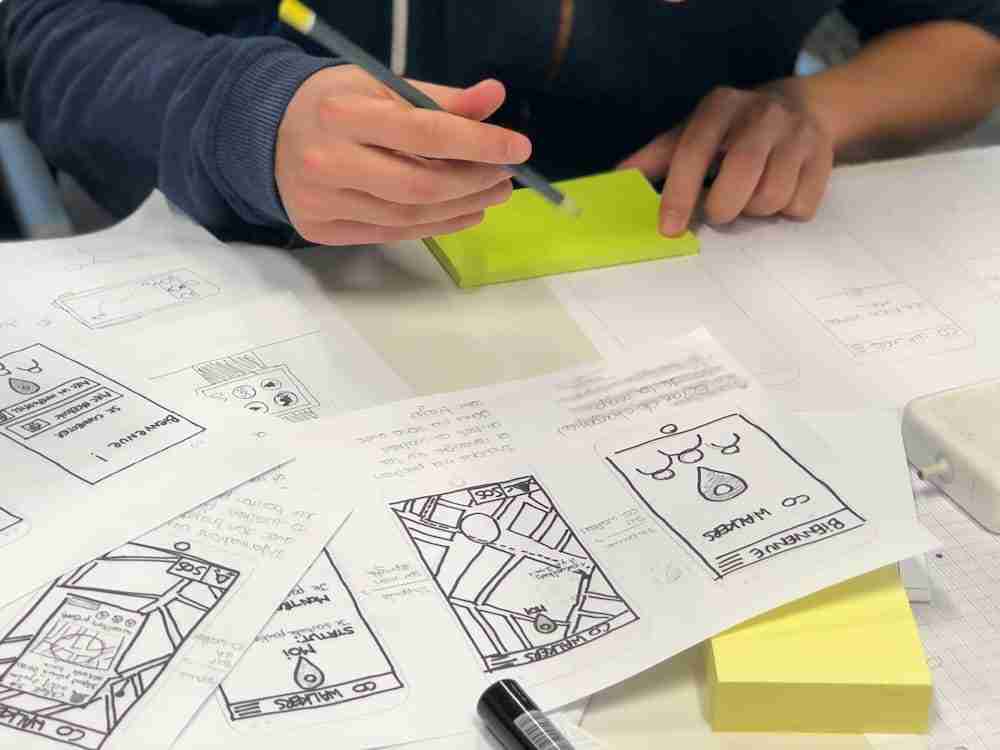
Innovation Strategy
Driving Growth Through Change

What is Innovation Strategy?
An Innovation Strategy is a comprehensive plan to promote and use innovation organisation-wide to create value, including innovation in process, product and sales. Key elements will include culture change, establishment of idea-to-execution pipelines, strong innovative leadership, utilisation of rapid prototyping and more. Innovative organisations gain a critical edge over their competitors, working smarter, growing faster and shaping their industries.
Why Having an Innovation Strategy is Important
Innovation can vary greatly in its nature and extent. It might be incremental, existing processes being enhanced, or it might be a breakthrough, a radical innovation, in which products and services are developed to create a new market or put the incumbent out of business. Innovation might focus on the brand (Virgin and Disney for example), the underlying processes (for example Zara) or an amalgam or brand and process (Apple, for example).
What we know from our vast experience in the corporate, government and start-up worlds, is that innovation, in all its shapes and sizes, is crucial for growth and for delivering greater value to the customer.
COVID19 has shown us a corollary to the importance of innovation is that speed of implementation is vital. Those organisations which can continually assess their value proposition and their business model, pivoting when necessary, will survive, even flourish. Those without innovation strategy and drive will wither. Perhaps not immediately. But often gradually, then quickly. And, in hindsight, inevitably.
However, innovation is not a random or luck-based phenomenon. Innovative organisations are the end result of deliberate efforts to shape culture, environment and processes which encourage flexibility, adaptation and initiative. This process of ‘organisational shaping’ is what strategy is all about.

What got us here, won’t get us there
The Strategy Group has been immersed in the world of innovation and strategy for the past twenty years. We have been able to distil the elements of a successful innovation strategy from dealing with countless clients in all sectors and being abreast of international research and literature. What we understand more and more deeply is that continuing the status-quo in a world of total disruption will not work. Change is all around us. Every day presents fresh challenges. The most unlikely are elected President, viruses that shut down our way of life and the global economy appear from nowhere.
We need to be humble, pause to reflect, and acknowledge that we don’t have solutions for the future, what got us here won’t get us there. Having faced this reality without deluding ourselves, we look to innovation to help us redesign models for our organisations, to find relevant value propositions, to think anew about the way we go-to-market, to imagine fresh ways to monetise our offerings, and, just as importantly, to build a culture that puts innovation at the centre of the way we do business.
The 5 elements of an Innovation Strategy
Strategy is at the heart of successful organisations, with strategies from employee experience, to marketing, sales, finance and more, explaining how each will develop, grow and ‘play to win’ in the future. But do you have an innovation strategy? If you don’t, then you cannot expect your organisation to survive and flourish in an age of change.
Here are the five elements your organisation needs in its own strategy:

1. Customer Centricity
The first step of any innovation strategy is really putting the customer at the centre of the organisation. Most organisations talk about this, but few have a strategy to do so. We very often work with organisations who send out surveys or measure Net Promoter (NPS) scores. If asked about their customers’ experience with the organisation, one often hears “Well, we get few complaints so it must be working”. The customers are nowhere near the centre unless the organisation makes it their business to put them there.
Smart organisations today are investing in meaningful customer research using professionals to carry out the engagement. This research is followed up by ideation sessions to distil the insights and brainstorm on ideas for both enhancing/finessing the customer journey and creating a new journey that will absolutely delight the customer.
Customer Experience may overlap with innovation, as many of the most innovative companies focus their innovation effort on improving the interactions and experiences of their customers with their products and services. The end goal of innovative process is a delighted customer. You can learn more about CX Strategy here.

2. Rapid prototyping
Once opportunities present themselves, innovative organisations
will be nimble to rapidly produce prototypes and running cheap, fast experiments to validate/invalidate the opportunities. Gone are the days of a three-year business plan that may or may not work. The key here is to foster a culture with a mindset disposed to run short, meaningful experiments, using a whole variety of techniques such as landing pages, social media, interviews and mock-ups.
Rapid Prototyping is critical in allowing existing and legacy organisations to compete and grow alongside innovative start-ups, as it allows these organisations to access new ideas and products with the low costs and minimal delay which is critical to start-up success.
Meaningful metrics have to be established up front. Tools need to be deployed to efficiently run these innovation experiments. There are three outcomes from such experimentation: Persevere, Perish or Pivot. These outcomes trigger further experiments and lead to the formulation of innovative business models. Measuring innovation is essential for it to be effective.

3. Building an Innovation Culture
A true and meaningful culture of innovation is essential for any innovation strategy to work effectively. Elements of an innovation culture include trust, rewards and recognition, and a “yes and” approach to ideas not a “yes but” approach”.
Building a culture of innovation takes training. The board and the senior leadership team need to buy into the idea of culture change, and their commitment is greatly bolstered by exposure to innovation experts in workshops.
Within the organisation, innovation champions need to be nominated or volunteer themselves to form a “guiding coalition”. This team should be taken through a 3-day bootcamp, which immerses them in customer centricity, rapid experimentation and ways to shift the culture in the rest of the organisation.
Innovation training can make an enormous change, demonstrating how the organisation is changing from a traditional organisation to one with an innovation focus and a clear innovation strategy, and assisting the organisation to make that shift. However, what cannot be overlooked is the need to change organisational processes to align with this culture-shift; if words are not accompanied by action, the culture will inevitably revert.
A strong Employee Experience Strategy will complement and drive forward an organisation’s innovation capability, ensuring that the organisation attracts and retains the best people, whilst enhancing employees ability to impact and innovate within an organisation. You can learn more about Employee Experience Strategy here.

4. Capturing and acting on ideas
Research has shown that the best ideas come from the employees and the customers. So how do you capture and act on those ideas for new products and services? Many organisations set up electronic “suggestion boxes” where they ask employees to post their ideas. But such mechanisms usually fail to support a culture of innovation. They fail for a number of reasons.
First, there is no time structure set or stated or problem to be solved, and there will often be an early flurry of random ideas that gives way to a trickle. Second, there is no well-defined process for evaluating and nurturing ideas, and ideas then languish in the process, resulting in employee cynicism: “See, no-one takes us seriously”. And third, there is no funding to help incubate the idea. Executives often assert that funding will be available if the idea merits it. In our experience, the funding rarely materialises. Idea-to-execution strategies work only if there is a recognised process of consideration and funding.
We have been managing many such idea-to-execution processes over the past fifteen years, and we know what works, and what does not. While everyone gets excited about capturing the ideas, real effort needs to go into the backend, the funding, the internal comms, the pipeline management.

5. Leadership
None of the above four elements will succeed unless the leadership of the organisation embraces a culture of business innovation and the will to walk-the- talk and encourage innovation across the entire organisation. There are simple and effective ways in which this can be achieved. Strong leadership that puts the customer first not just in name, but in action, is required. Rewarding someone at a company meeting when they have attempted something new even though it has failed changes the game. It is critical that leadership recognise that innovation across an organisation can be even more important than a sales, or marketing strategy. Buy in, or a lack thereof, can make or break an innovation strategy. Over the past fifteen years we have been able to distil what can make a difference in each element of a culture of innovation and the role of leadership within an innovation strategy.
4 KEY STEPS
How to Develop an Innovation Strategy
1. Assess Innovation Capability
The first step is to evaluate the current state of your innovation capacity and culture within your organisation. This may involve undertaking internal surveys, interviews, focus groups and desktop research (including analysis of organisational structure and past initiatives) to gain a deep understanding about the current strengths and weaknesses of the organisation.
The collected data should be analysed to identify areas of potential improvement and opportunities to capitalise on capabilities. An overall assessment of innovation capability should be produced highlighting the results across different areas of the organisation.
2. Explore Opportunities
The next step is to explore opportunities to build your organisation’s capacity for innovation. This may involve studying competitors innovation initiatives, running internal and external ideation workshops, researching best practice on structuring innovative organisations and recognising emerging trends in building an innovative culture.
These opportunities should be considered and reflected upon by a diverse set of stakeholders across the organisation to ensure that they are realistic and likely to be effective. This process of exploring and testing the opportunities should result in narrowing down to a set of opportunities to be considered for incorporation into the innovation strategy in the co-design process.
3. Co-Design your Strategy
Now that you have both an understanding of the current state of innovation capabilities and a set of potential opportunities to further expand capacity, the third step is to involve key stakeholders in a co-design process to build out your plan.
During the co-design sessions, the team should define a set of innovation priorities based off the current capabilities and needs, and decide on the best set of innovation opportunities to target those priorities. It may be helpful to split these across short and long term priorities and opportunities.
The team should define measurable indicators of success in executing those opportunities. The results of the capability assessment, innovation opportunities, priorities and the final co-designed strategy should be put into one easily understood innovation strategy plan, facilitating clear communication and effective implementation.
4. Integrate the Innovation Strategy into your Organisation
Merely having a strategy will not have an impact; it needs to be integrated and implemented throughout the business. A structured integration plan should be developed and executed in light of the priorities and opportunities in the strategy, outlining how to embed and change manage the strategy into the business. The plan should emphasise accountability for each part of the strategy to ensure implementation occurs, and contain continuing measures to sustain buy-in from key stakeholders.
Innovation Strategy Example Case Study: Tesla
Tesla is a company that has consistently pushed the boundaries of innovation in the automotive and energy sectors. Here are some key elements of Tesla’s strategy:
1. Disruptive technology
Tesla has focused on developing and commercializing technologies that have the potential to disrupt traditional industries. For example, the company has developed electric vehicles that are more energy-efficient and environmentally friendly than gasoline-powered vehicles, and has also pioneered the development of solar panels and energy storage systems.
2. Vertical integration
It also takes a vertically integrated approach to its business, which means that it controls all aspects of the design, production, and distribution of its products. This allows the company to have greater control over its supply chain and to be more agile in bringing new products to market. Most importantly, it means that its product range is not limited by the lack of innovation and agility at other companies, and also allows for incredible potential innovation in production processes as previously distinct stages of production are integrated.
3. Collaboration
Further, Tesla has actively sought out partnerships and collaborations with other companies and research institutions to help accelerate its technological progress. For example, the company has worked with the Department of Energy’s National Renewable Energy Laboratory to improve the efficiency of its solar panels and has also collaborated with Panasonic to develop battery technology for its electric vehicles.
4. Constant Iteration
Critical to Tesla’s innovation is a culture of continuous improvement which encourages its employees to constantly look for ways to optimise and improve its products and processes. This has allowed the company to rapidly iterate on its technology and bring new and improved products to market. This has been driven by their focus on being Engineering-led, placing a strong emphasis on engineering and innovation, and encouraging all of their employees, regardless of their level of seniority, to suggest changes and improvements. This helps the company maintain their culture of continuous improvement and encourages creative thinking and problem-solving.
5. Customer Focus
Tesla has made customer experience a key part of its innovation strategy, and has consistently sought feedback from its customers to improve its products and services. For example, the company has used customer feedback to improve the range and charging capabilities of its electric vehicles, as well as to drive development of their AI self-driving program through FSD (Full Self Driving) beta, and the incorporation of new features into their centre console in their vehicles.
6. Attracting Top Talent
Finally, the company has built a reputation for rapid innovation and a focus on employee empowerment, which has helped the company attract top talent in the engineering and technology fields. The company’s high-profile announcements and public image as a leader in the automotive and energy sectors have also contributed to its ability to attract top talent. Indeed, Elon Musk has stated that the reason for their ‘AI Day’ events, and other events such as their CyberTruck reveal is largely to attract employees, rather than customers. By attracting innovative and driven employees, Tesla is able to continue pushing the boundaries of technology and driving innovation in its products and processes.
These elements have helped the company become a leader in the automotive and energy sectors and have allowed it to bring innovative products to market quickly and efficiently. As a relatively new company, Tesla has been able to shape its innovation strategy without the institutional baggage that often comes with established firms. This has allowed the company to be more agile and responsive to changing market conditions and needs, and has helped it maintain its position as a disruptor in its industry.
DEFINE BENEFITS
Innovation relies on a vision and purpose. Defining the value and benefits of the project is the first step in any strategy.
ENGAGE STAKEHOLDER
A culture of innovation is essential for it to flourish on an ongoing basis. We help you engage stakeholders with innovative leadership.
DEVELOP STRATEGY WITH CLEAR METHODOLOGY
Constructing the strategy using the best-fit methodology, then socialising it internally ensures the success of your strategy.
How The Strategy Group Can Help You
Developing an innovation strategy for an organisation is made easy when the insights and guidance of The Strategy Group are on hand to assist. We have extensive experience in all the essential elements of developing a comprehensive strategy to grow any organisation into an innovation powerhouse. Many of our engagements start small – and that’s great, as they enable us to demonstrate tangible benefits quickly.
With many of our clients we are their long-term strategic partner. With some, there is a specific goal – to validate a new venture, to assist in spinning out a startup, to training the leadership and staff in innovative organisational culture, to uncovering the customer journey so that our client can work out how to delight their own customers.
We pride ourselves in tailoring our skills to each clients’ need, specific or organisation-wide, as we help them develop the innovation strategy that is crucial for any organisation to survive and flourish in an age of disruptive change.
Innovation Strategy Insights
Navigating The Great Resignation in Australia: Why Purpose Is the Key
Learn about the 'Great Resignation' in Australia, and why focusing on employee purpose is the key to navigating the Great Resignation.
Read More
Emerge into innovation – not business as usual
Your understanding of how to innovate will be the point of differentiation that will set your business up to trump the competition as we learn ...
Read More
‘Never waste a good crisis’ – strategic insights in the evolution of digital healthcare
The pandemic has been an opportunity to extend an arm into industries that have been behind in the digital space. We explore the strategic insights ...
Read More
Chat-bots: The Intersection of Digital Disruption and Customer Experience
Chat-bots are an almost ubiquitous part of digital strategy - learn about what is needed for them to improve rather than detract from customer experience.
Read More
Digital Transformation Failures, and How we can learn from them
What the meteorite was to dinosaurs, a poorly executed digital transformation is to a CEO. Find out why a human-centred design approach is critical in ...
Read More
Digital Transformation – What we can learn from the UK’s COVID-19 Response
Find out why the UK's rapidly built Nightingale Hospital COVID response is yet another example of failed digital transformation
Read More
Why The Strategy Group should be your strategy partner
We will work with you to design and support implementation of a strategy for your business unit, for your entire organisation, or for any segment of your organisation where a fresh approach will add value.
We will use a combination of globally-recognised leading-edge processes, coupled with our proprietary validated toolbox to develop a bespoke, customised strategy, which we can assist you in implementing, that will deliver tangible impact and value to your organisation, employees and customers.
We have been designing and implementing strategy solutions since 2003 and we have the expertise and the experience not only to deliver, but to overdeliver.










